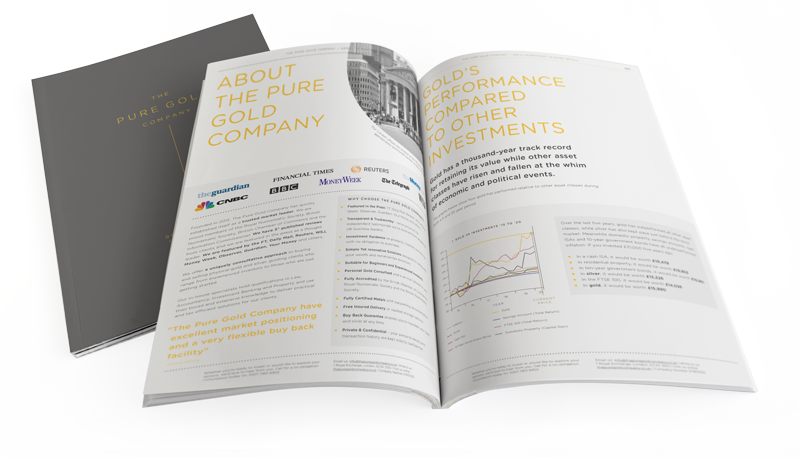By the end of 2019, there were almost 200,000 tonnes of gold above the ground. Most of it, in jewellery, private investment, official holdings and gold in other forms.
With that vast quantity already mined, refined and circulating worldwide, a gold squeeze might seem unlikely. As more people look to buy, the law of supply and demand prompts a price rise, which compels more people to sell, increasing supply.
When the market is plodding along at a gentle pace, this works well. When there is a surge in demand, a gold squeeze can affect investors looking for the safe-haven of physical gold. This is especially true with a surge as unexpected and substantial as the panic buying caused by the pandemic
Great Gold Squeeze
The Great Gold Squeeze of 2020 happened in the early days of COVID-19 when retail investors tried to buy gold to protect their assets. The financial world watched as the global economy went into meltdown.
Although vaults were stuffed with 400-ounce bars worth half a million pounds, there was a shortage of affordable, small denomination gold coins or bars. Just as demand rocketed, supply was crimped by lockdowns and travel restrictions, lead times lengthened, and the great gold squeeze of 2020 began.
Mad dash for financial safe-havens
As the new virus spread from country to country, no one could have foreseen the speed and virulence of its eventual transmission and the sudden global shutdown of entire economies by mid-March.
Just before the main lockdowns took hold, the gold price took a steep dive. It was moving in tandem with the falling markets instead of in the opposite direction. This is usually the case when mainstream assets slump in times of uncertainty.
It may have looked like gold demand was falling from the outside, but a physical gold squeeze had already started. Most of the selling was concentrated on gold futures or exchange-traded funds. Large investors were selling assets (including gold) to unwind positions and free up funds. Meanwhile, physical demand surged.
Physical gold retailers found it difficult to source a supply of smaller denomination bars and coins. Such gold is the mainstay of smaller retail investors who were rushing to buy into safe-haven gold. By the time the initial sell-off had turned into a sharp upswing, physical demand had thrived even as the price rose. Many retailers were having a hard time getting hold of stock.
The good, the bad and those of ill repute
For the sellers who had agreed on sales before they had stock in, this price reversal would mean they would be selling at a loss. Their buying premiums would have increased, and they would have to pay more for the metal than what they charged. If buyers in their haste had chosen a seller of ill repute, these retailers might have offered an alternative product to minimise their losses or reneged on a sale.
A reputable gold seller will have secured a supply within their vault before confirming a sale. Even if this made lead times longer, the price and availability would be secure at the time.
Refinery and mining shutdowns
The shutdowns across almost all countries had a knock-on effect on the physical gold supply. Gold mining operations were suspended. Fewer tonnes of gold were mined. This meant the availability of doré gold (a semi-pure form of gold bar) was limited. This had an impact on how much gold refineries received for purification and reshaping.
In addition, these refineries were also affected by the lockdowns. Three of the world’s largest refineries in Switzerland suspended production during the initial lockdown period. The refineries shape the smaller, more affordable bars and coins popular with retail investors who cannot buy the larger, more expensive bars. The refineries reopened fully six weeks later, but their closure affected the supply chain and affordable gold in circulation. The shutdowns coincided with heightened physical gold demand and caused a significant squeeze in supply.
Even when retailers could secure gold supply, moving it around became more difficult because of restrictions on the movement of people and goods to curtail the spread of the virus. Commercial air travel was restricted, which limited the options for moving gold. This increased costs and exacerbated the squeeze. Even when airlines were operating, gold was a low-priority cargo. Precedence was given to protective equipment and pharmaceuticals.
Unwilling gold sellers
After a short, sharp drop, the gold price recovered its initial losses. Against a backdrop of struggling stock markets, investors who already held gold decided to wait. Even when the gold price began to climb in mid-March, many physical gold holders still considered the price low, and chose to retain their holdings, limiting supply further. The gold these retail investors might have sold were the smaller bars and coins for which demand far outweighed supply at the time. And if they did choose to sell, opportunities were limited by the closure of non-essential shops. All of this increased the logistical difficulty of maintaining the gold market’s liquidity.
Price rise
Apart from the short dip in early March when electronic gold sales sent the price lower despite a clamour for the physical metal, the closure of mines, refineries and retail outlets all helped to push the price of gold up in the first half of 2020.
August 2020 gold price high
By August the gold price was above £1500 per ounce, peaking at over £1563 on August 6. The price has tempered since then as supply pressure has eased. This is a positive development for investors looking to secure physical gold stock, using the current price as a buying opportunity.
Brexit
Under the right circumstances, a surge in demand can replicate the physical gold squeeze of early 2020. Brexit won’t have helped the smooth movement of goods including gold and silver from outside and within the EU. Delivery into the UK is now a more complicated process and this can mean delays especially in times of peak demand. ]Smart investors hold gold in their portfolio as a long-term source of growth and security. They hedge against uncertainty, inflation or dollar weakness. The pandemic affected the availability of physical gold when demand was at its highest. Now that this demand has eased, the long-term effects of the COVID-19 crisis will underpin gold demand.
The economic measures undertaken by governments around the world to prop up businesses and avoid massive recessions, including quantitative easing and running up record peacetime debt, mean uncertainty and economic difficulty for many years to come. And gold will be there as a safe-haven in any tight squeeze.


